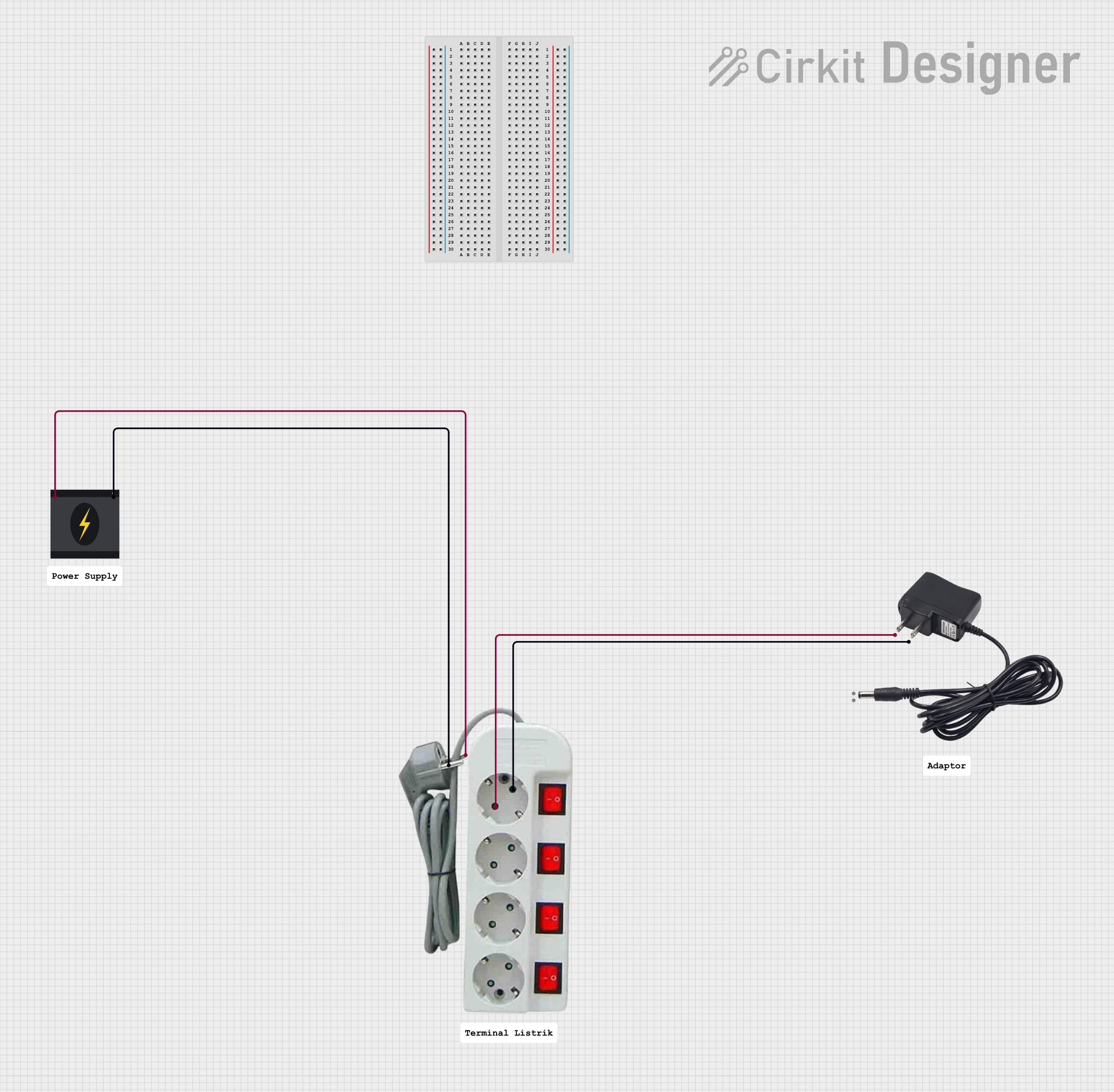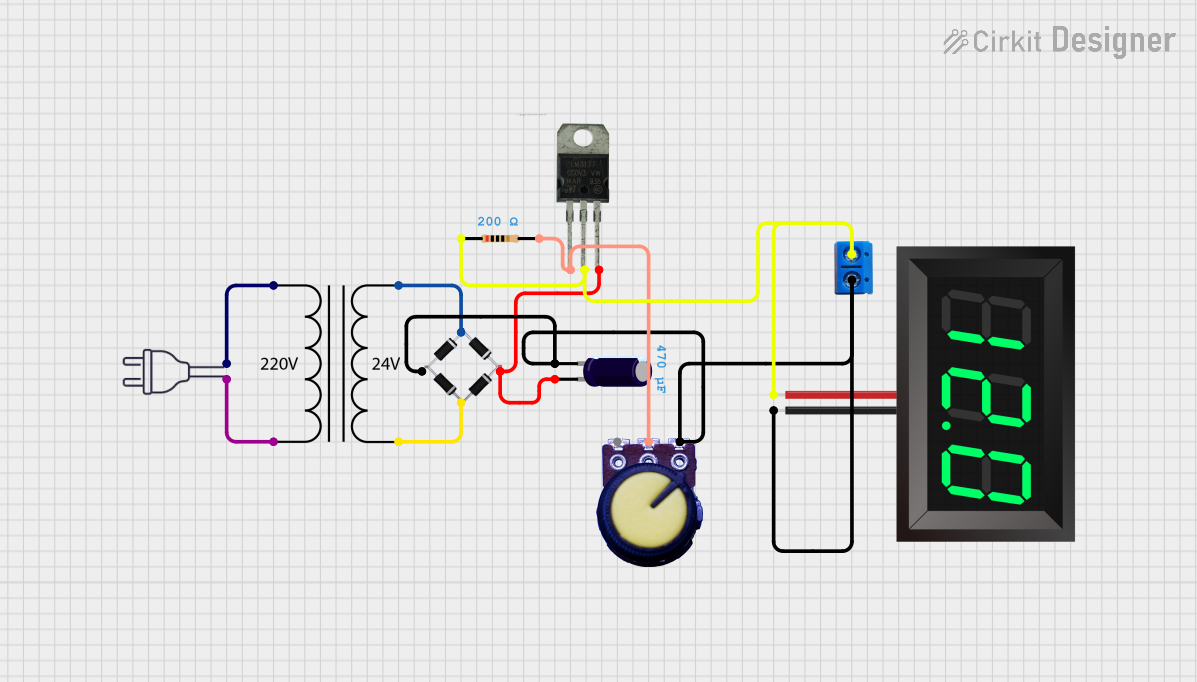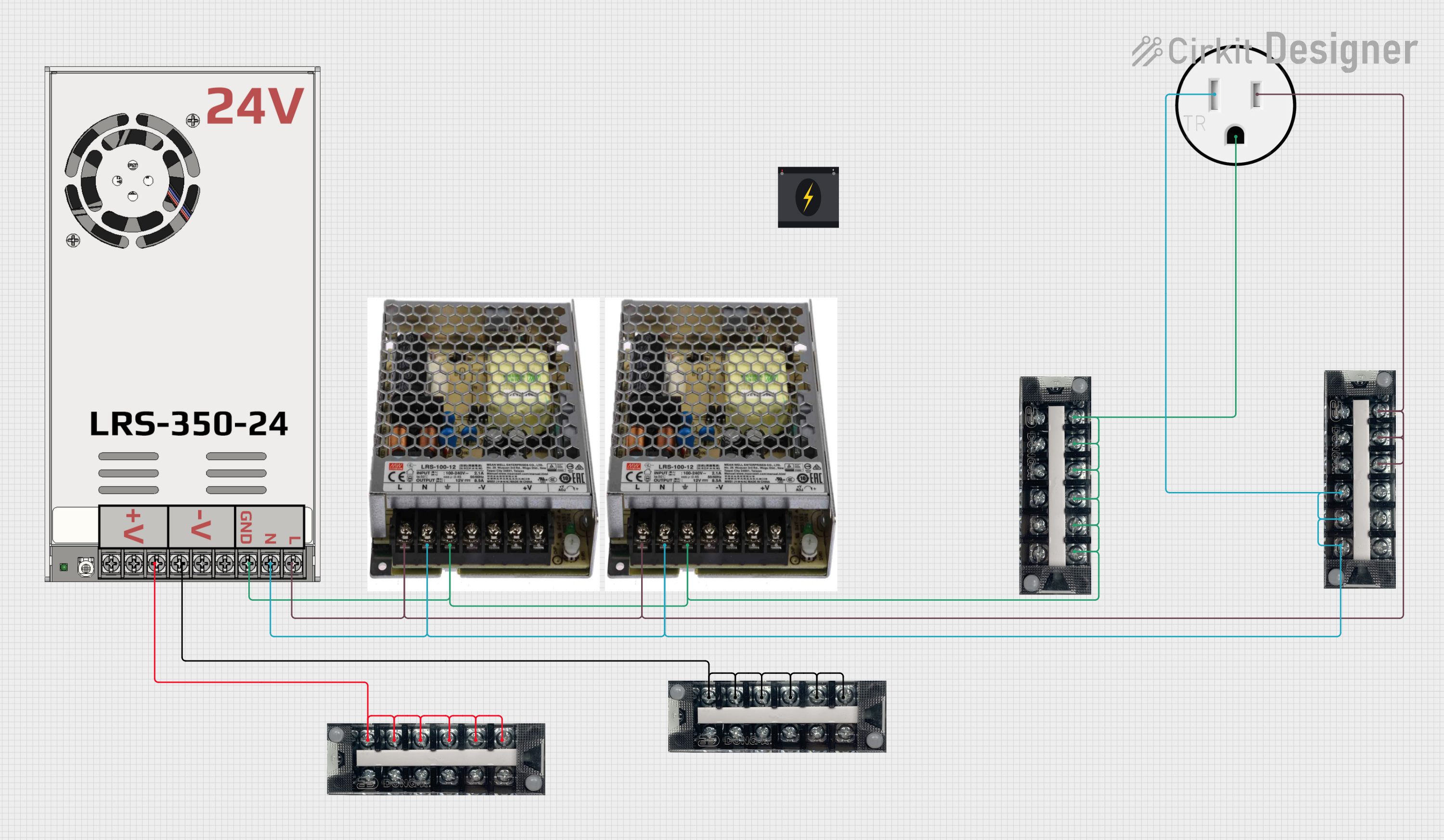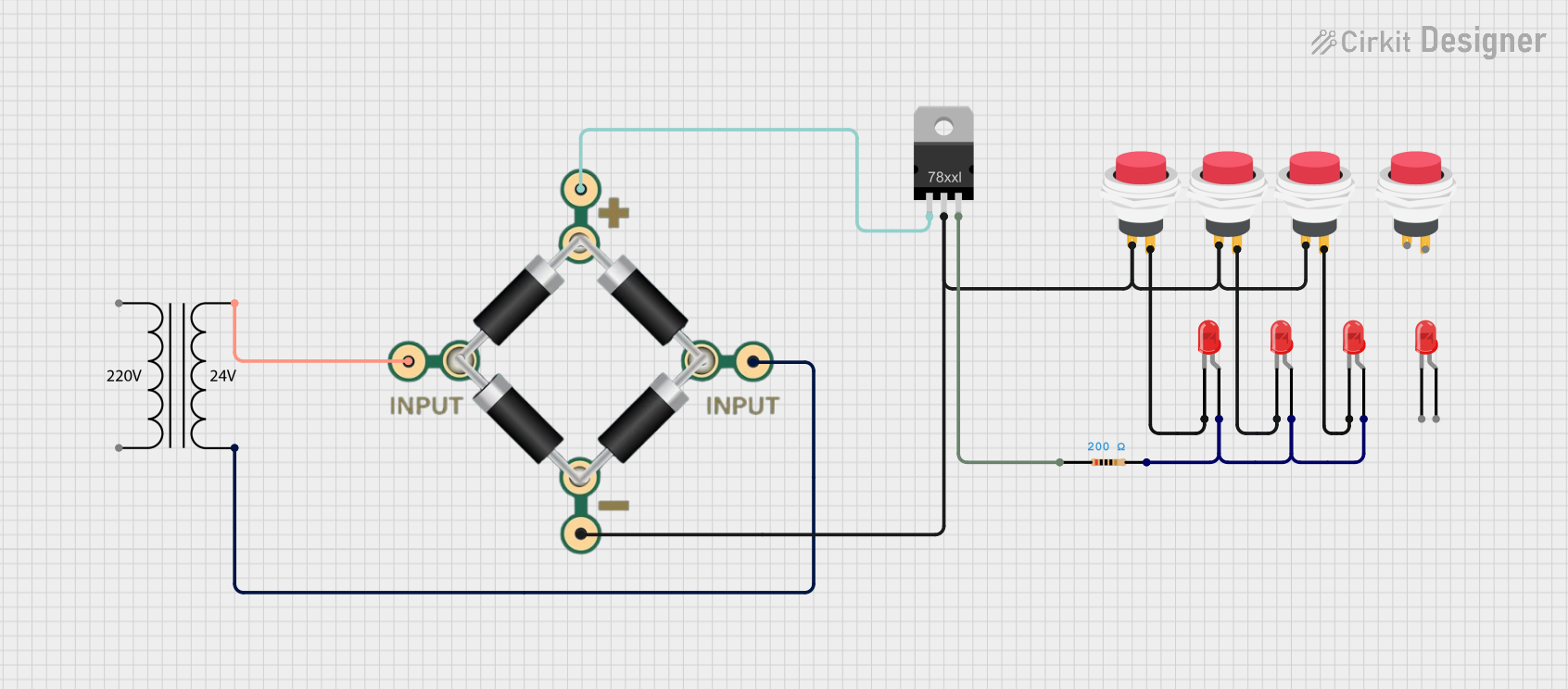
How to Use 12-220v CONVERTER: Examples, Pinouts, and Specs

 Design with 12-220v CONVERTER in Cirkit Designer
Design with 12-220v CONVERTER in Cirkit Designer12-220V Converter Documentation
Introduction
The 12-220V Converter is an electronic device designed to convert low-voltage DC power (typically 12V) into high-voltage AC power (220V). This component is widely used in applications where appliances or devices requiring 220V AC power need to be operated from a 12V DC source, such as a car battery or solar power system.
Common Applications
- Powering household appliances (e.g., lights, fans, small kitchen devices) from a 12V battery.
- Off-grid solar power systems.
- Emergency backup power systems.
- Mobile power solutions for RVs, boats, and camping setups.
The 12-220V Converter is an essential tool for bridging the gap between low-voltage DC sources and high-voltage AC devices, making it a versatile and practical component for a variety of use cases.
Technical Specifications
The following table outlines the key technical details of the 12-220V Converter:
| Parameter | Value |
|---|---|
| Input Voltage (DC) | 12V ± 10% |
| Output Voltage (AC) | 220V ± 5% |
| Output Frequency | 50Hz ± 1Hz |
| Output Waveform | Modified Sine Wave / Pure Sine Wave (varies by model) |
| Maximum Output Power | 300W (typical) |
| Efficiency | ≥ 85% |
| No-Load Current | ≤ 0.5A |
| Operating Temperature | -10°C to 50°C |
| Protection Features | Overload, Overheat, Short Circuit |
| Dimensions | 150mm x 100mm x 50mm (typical) |
| Weight | ~500g |
Pin Configuration and Descriptions
The 12-220V Converter typically has the following input and output connections:
| Pin/Connector | Description |
|---|---|
| DC Input (+) | Positive terminal for 12V DC input. Connect to the positive terminal of the power source (e.g., battery). |
| DC Input (-) | Negative terminal for 12V DC input. Connect to the negative terminal of the power source (e.g., battery). |
| AC Output (L) | Live terminal for 220V AC output. Connect to the live wire of the load. |
| AC Output (N) | Neutral terminal for 220V AC output. Connect to the neutral wire of the load. |
| Ground (optional) | Ground terminal for safety. Connect to the earth ground if required. |
Usage Instructions
How to Use the 12-220V Converter in a Circuit
Connect the DC Input:
- Identify the positive (+) and negative (-) terminals of the 12V DC power source (e.g., a car battery or solar panel).
- Connect the positive terminal of the power source to the DC Input (+) pin of the converter.
- Connect the negative terminal of the power source to the DC Input (-) pin of the converter.
Connect the AC Output:
- Identify the live (L) and neutral (N) terminals of the device or appliance you want to power.
- Connect the live wire of the appliance to the AC Output (L) terminal of the converter.
- Connect the neutral wire of the appliance to the AC Output (N) terminal of the converter.
Optional Grounding:
- If the converter has a ground terminal, connect it to a proper earth ground for safety.
Power On:
- Turn on the converter (if it has a power switch).
- Verify that the connected appliance is functioning correctly.
Important Considerations and Best Practices
- Check Power Ratings: Ensure the total power consumption of the connected appliances does not exceed the maximum output power of the converter.
- Use Proper Wiring: Use wires with appropriate gauge ratings to handle the current without overheating.
- Ventilation: Place the converter in a well-ventilated area to prevent overheating.
- Avoid Overloading: Do not connect appliances that draw more power than the converter can supply.
- Safety First: Always disconnect the converter from the power source before making any wiring changes.
Example Application with Arduino UNO
While the 12-220V Converter is not directly interfaced with microcontrollers like the Arduino UNO, it can be used in projects where the Arduino controls a 12V DC power source (e.g., via a relay) to power the converter. Below is an example of how to use an Arduino UNO to control the converter using a relay module.
Circuit Diagram
- Connect the Arduino UNO to a relay module.
- Use the relay to switch the 12V DC input to the converter.
Code Example
// Example code to control a 12-220V Converter using a relay module
// connected to an Arduino UNO. The relay is triggered to power the
// converter when a button is pressed.
const int relayPin = 7; // Pin connected to the relay module
const int buttonPin = 2; // Pin connected to the button
int buttonState = 0; // Variable to store button state
void setup() {
pinMode(relayPin, OUTPUT); // Set relay pin as output
pinMode(buttonPin, INPUT); // Set button pin as input
digitalWrite(relayPin, LOW); // Ensure relay is off initially
}
void loop() {
buttonState = digitalRead(buttonPin); // Read the button state
if (buttonState == HIGH) {
// If button is pressed, turn on the relay
digitalWrite(relayPin, HIGH);
} else {
// If button is not pressed, turn off the relay
digitalWrite(relayPin, LOW);
}
}
Troubleshooting and FAQs
Common Issues and Solutions
| Issue | Possible Cause | Solution |
|---|---|---|
| Converter does not power on | No input power or loose connections | Check the 12V DC input and ensure proper connections. |
| Appliance does not work | Overload or incompatible appliance | Verify the appliance's power rating and ensure it is within the converter's capacity. |
| Overheating | Poor ventilation or high ambient temperature | Place the converter in a well-ventilated area and avoid overloading. |
| Output voltage is unstable | Insufficient input power or faulty converter | Check the input power source and ensure it can supply sufficient current. |
| Noise or interference in appliances | Modified sine wave output | Use a pure sine wave converter for sensitive devices. |
FAQs
Can I use the converter with a solar panel?
- Yes, as long as the solar panel is connected to a 12V battery or a compatible charge controller.
What type of appliances can I power with this converter?
- You can power most household appliances within the converter's power rating. However, sensitive devices like medical equipment may require a pure sine wave converter.
How do I know if the converter is overloaded?
- Many converters have an overload protection feature that shuts them off automatically. Check the connected load and reduce it if necessary.
Can I use this converter in a car?
- Yes, it is commonly used in vehicles to power 220V AC devices from the car's 12V battery.
This documentation provides a comprehensive guide to understanding, using, and troubleshooting the 12-220V Converter. Always follow safety guidelines and consult the manufacturer's manual for specific details about your converter model.
Explore Projects Built with 12-220v CONVERTER

 Open Project in Cirkit Designer
Open Project in Cirkit Designer
 Open Project in Cirkit Designer
Open Project in Cirkit Designer
 Open Project in Cirkit Designer
Open Project in Cirkit Designer
 Open Project in Cirkit Designer
Open Project in Cirkit DesignerExplore Projects Built with 12-220v CONVERTER

 Open Project in Cirkit Designer
Open Project in Cirkit Designer
 Open Project in Cirkit Designer
Open Project in Cirkit Designer
 Open Project in Cirkit Designer
Open Project in Cirkit Designer
 Open Project in Cirkit Designer
Open Project in Cirkit Designer